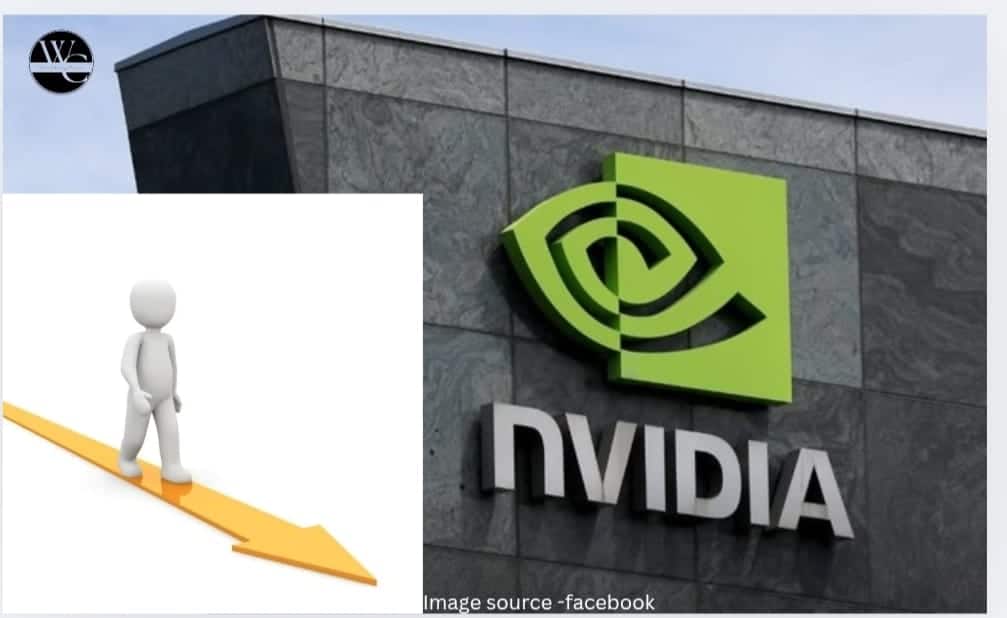NVIDIA, the American tech giant known for its GPUs, has long been a dominant player in the AI and semiconductor markets. However, the emergence of DeepSeek, a Chinese AI-focused company, is creating ripples in the tech and investment landscape. While DeepSeek’s rise has benefited Chinese innovation, it has negatively impacted NVIDIA’s stock performance due to geopolitical, technological, and competitive pressures.
Timothée Chalamet’s | What stars says about this Star |Trending Today
Historical Context
NVIDIA’s Dominance in AI and GPUs
- NVIDIA, founded in 1993, revolutionized computing by designing GPUs that accelerated AI, gaming, and data center applications.
- Its flagship GPUs like the A100 and H100 became industry standards, particularly in machine learning and AI training tasks.
- NVIDIA saw record revenue during the global AI boom, fueled by partnerships with companies like OpenAI and Microsoft.
- Until recently, Chinese firms relied heavily on NVIDIA’s GPUs for their AI development, making NVIDIA indispensable.
The Rise of DeepSeek
- DeepSeek, a Chinese AI company, emerged as a competitor in the early 2020s, focusing on AI software platforms, advanced semiconductor designs, and localized AI solutions tailored to China’s needs.
- Supported by government funding and a favorable regulatory environment, DeepSeek developed AI chips and infrastructure capable of reducing reliance on U.S.-made hardware like NVIDIA GPUs.
Current Situation
Geopolitical Tensions
- U.S.-China trade restrictions play a significant role in this dynamic. In 2023, the U.S. imposed export bans on high-performance NVIDIA GPUs like the A100 and H100 to Chinese firms, citing national security concerns.
- These restrictions pushed Chinese companies, including DeepSeek, to accelerate domestic innovation, reducing their reliance on U.S. tech.
- As a result, NVIDIA lost access to one of its largest markets for high-end GPUs.
DeepSeek’s Market Ascent
- DeepSeek has become a leading provider of AI and semiconductor solutions within China, leveraging its deep understanding of the local market and government backing.
- By introducing homegrown AI chips and software platforms, DeepSeek captured market share that was previously dominated by NVIDIA.
- In 2024, DeepSeek launched its D800 AI accelerator, a competitor to NVIDIA’s A100, with competitive pricing and optimized performance for Chinese data centers.
NVIDIA’s Stock Decline
- In late 2024, NVIDIA’s stock faced significant pressure due to a reduction in demand from Chinese firms and concerns over supply chain disruptions.
- The market perceived NVIDIA as vulnerable to geopolitical risks, while DeepSeek was seen as a rising star in the AI industry.
- NVIDIA’s stock declined by 15% over six months, while DeepSeek’s valuation surged by 20%, driven by local investor confidence.
Future Forecast
China’s AI Self-Sufficiency
- China aims to achieve AI self-sufficiency by 2030, with companies like DeepSeek playing a pivotal role.
- This strategic shift will likely reduce demand for NVIDIA’s GPUs in China, a trend that could continue to hurt NVIDIA’s growth in Asia.
NVIDIA’s Global Opportunities
- Despite challenges in China, NVIDIA remains a leader in AI and cloud computing. The global demand for AI solutions in industries like healthcare, autonomous vehicles, and gaming ensures NVIDIA’s relevance.
- Expansion in markets like India, Europe, and South America could offset losses in China.
The Role of Innovation
- To compete with emerging rivals like DeepSeek, NVIDIA will need to focus on cutting-edge R&D. Breakthroughs in quantum computing, edge AI, and energy-efficient GPUs could restore investor confidence.
- Strategic partnerships and acquisitions could help NVIDIA maintain its edge in global markets.
Trump’s Second Term Executive Actions
DeepSeek’s Global Ambitions
- If DeepSeek decides to expand beyond China, it could emerge as a formidable competitor on the global stage.
- However, potential trade restrictions and intellectual property concerns may limit DeepSeek’s ability to penetrate Western markets.
Investor Sentiment
- NVIDIA’s stock could experience volatility, with performance tied to geopolitical developments, technological advancements, and global AI adoption rates.
- DeepSeek’s valuation, on the other hand, will depend heavily on its ability to sustain innovation and compete globally.
A New Era in HIV Care : Lenacapavir
Whether NVIDIA (NVDA) is a buy, sell, or hold depends on your investment strategy, risk tolerance, and the current market situation. Let’s break it down based on key factors:
1. Why NVIDIA Might Be a Buy
- Market Leadership in AI: NVIDIA dominates the AI and GPU space with cutting-edge technology like the H100 GPUs, which are crucial for AI training models such as ChatGPT and other generative AI platforms.
- Revenue Growth: Despite challenges in China, NVIDIA continues to experience strong revenue growth in AI, cloud computing, and gaming. In 2024, NVIDIA achieved record earnings, with AI adoption driving its data center revenue.
- Global AI Demand: The world’s demand for AI solutions, including generative AI, autonomous driving, and edge computing, continues to expand, making NVIDIA’s products indispensable in these markets.
- Diversification: NVIDIA is broadening its reach into new areas like quantum computing, AI software, and Omniverse platforms, which could unlock new revenue streams.
TikTok goes dark in US for users | 90-Day Extension
Who Should Buy?
- Long-term investors who believe in the potential of AI and NVIDIA’s leadership in the sector.
- Those who see NVIDIA as undervalued after recent corrections, given its strong fundamentals and future growth opportunities.
2. Why NVIDIA Might Be a Sell
- Valuation Concerns: NVIDIA’s stock has historically traded at a high price-to-earnings (P/E) ratio, making it expensive relative to peers. Some analysts argue it is overvalued after significant price gains in 2023.
- Geopolitical Risks: U.S. export restrictions on NVIDIA GPUs to China could limit growth opportunities in one of its largest markets. This geopolitical uncertainty creates risk for investors.
- Emerging Competition: The rise of competitors like DeepSeek and other Chinese semiconductor firms could eat into NVIDIA’s market share, particularly in Asia.
- Macroeconomic Headwinds: Rising interest rates and fears of a global economic slowdown could pressure high-growth tech stocks like NVIDIA.
Who Should Sell?
- Short-term investors who believe the stock is near a peak valuation or are worried about near-term volatility due to geopolitical risks.
- Investors seeking to take profits after significant stock price appreciation in 2023 and early 2024.
3. Why NVIDIA Might Be a Hold
- Resilience Despite Challenges: NVIDIA has proven its ability to adapt to challenges, including supply chain disruptions, trade restrictions, and competition. Its diversified revenue streams mitigate some risks.
- Steady Growth Potential: While its valuation may seem high, NVIDIA’s leadership in critical industries like AI and machine learning suggests steady growth over the long term.
- China as a Wildcard: Even with export restrictions, NVIDIA is working on modified GPUs (like the A800 and H800) to meet Chinese regulations. These efforts could sustain some revenue from China.
- Innovation Pipeline: NVIDIA continues to invest heavily in research and development, ensuring it remains a leader in the AI space.
Who Should Hold?
- Investors with a balanced portfolio who are comfortable holding NVIDIA for the long term but are cautious about adding more at current prices.
- Those who believe the stock’s current valuation is fair and prefer to wait for a clearer buying opportunity.
Key Metrics to Consider
- Valuation: Check the current P/E ratio, price-to-sales (P/S) ratio, and compare NVIDIA to peers in the semiconductor and AI industries.
- Earnings Reports: Keep an eye on quarterly earnings to evaluate revenue growth in data centers, gaming, and automotive AI.
- Geopolitical Developments: Monitor U.S.-China relations, particularly export policies, as they could significantly impact NVIDIA’s revenue in China.
- Technological Leadership: Look for updates on NVIDIA’s new products, such as GPUs, AI platforms, and software solutions.
Current Analyst Consensus
- As of early 2025, most analysts maintain a Buy rating for NVIDIA due to its dominant position in AI and strong future growth potential.
- Some cautious analysts suggest a Hold due to high valuation concerns and geopolitical risks.
- Very few recommend a Sell, unless there are short-term profit-taking goals or risk-averse strategies.
Conclusion
- Buy: If you’re confident in the long-term growth of AI and believe NVIDIA will continue to dominate.
- Hold: If you already own NVIDIA stock and are uncertain about short-term fluctuations but optimistic about the long term.
- Sell: If you think the stock is overvalued or need liquidity to invest in less volatile opportunities.
Let me know if you’d like specific valuation metrics, recent earnings updates, or other details to refine your decision!

